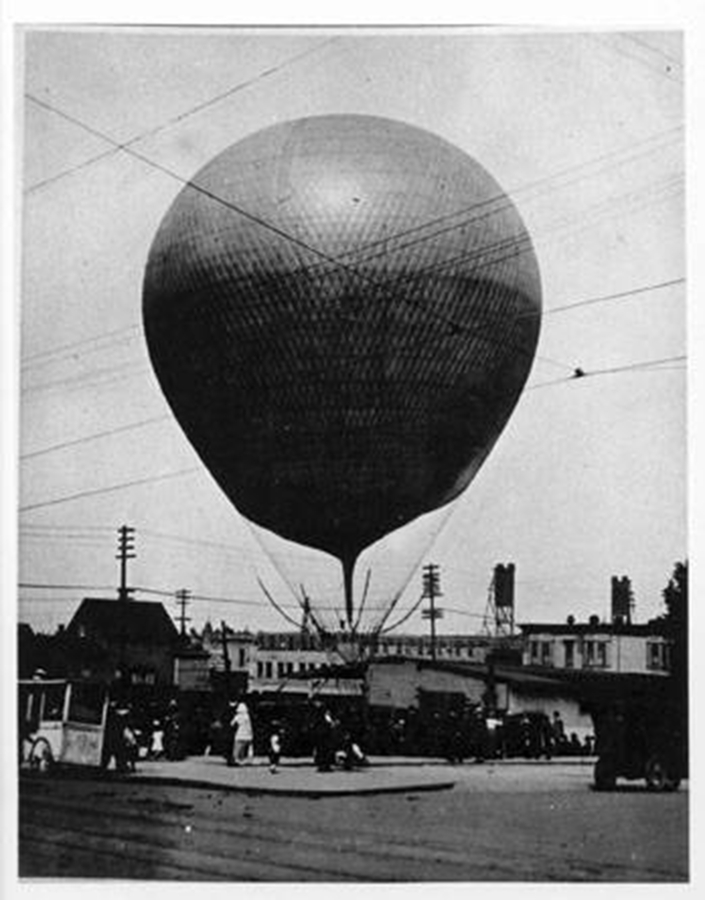April 1890, Vancouver’s first balloon ascent took Professor William Lang skyward. He floated up from 13th Street, reaching 500 or 600 feet as a crowd of locals craned their necks to keep him in view. Local papers dubbed this modest ascension a success. They made no mention of the professorial descent, so we may assume it was without problems.
The following year, Professor Vilas (whose first named isn’t noted in the National Park Service’s historical account) lofted a balloon from the corner of 12th and Main streets. The professor’s hot air balloon lifted beyond Lang’s height and reached 800 feet as about 1,500 Vancouverites watched. When his balloon reached 800 feet, he bailed out. The onlookers must have gasped as Vilas plunged earthward, seemingly to his death. Instead, he had just made the first parachute jump in the county. His parachute silks unfurled, and he drifted to the ground beneath an enormous white parasol. However, on landing his parachute, Vilas narrowly skirted a white picket fence, preventing the county’s first jump from ending in disaster. Nothing is said about how or where the balloon came down.
A 1911 issue of The Vancouver Columbian recalled “some years back” a Dick Miller launched his balloon on July 4. Miller evidently lacked both the professorial skills of Lang or the pedagogical foresight of Vilas. who dropped to Earth under silk. Instead, Miller and his balloon descended not to dry land but into the wet Columbia River and had to be rescued.
At the mercy of the wind, balloons could only control their altitude. However, airships filled with hydrogen appeared around 1900 and were propelled, like the ones Beachey piloted in 1905.
These new dirigibles had an engine spinning a propeller, which allowed a pilot to control the direction and speed of the craft. Often several hundred feet long, they traveled hundreds of miles. Such airships became the first passenger airliners — and the first weaponized military aircraft.
Martin Middlewood is editor of the Clark County Historical Society Annual. Reach him at ClarkCoHist@gmail.com.



